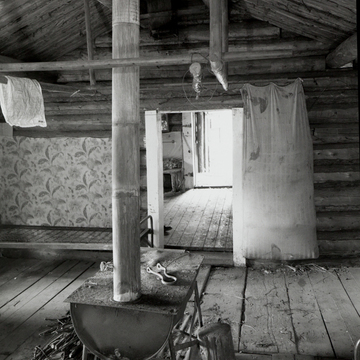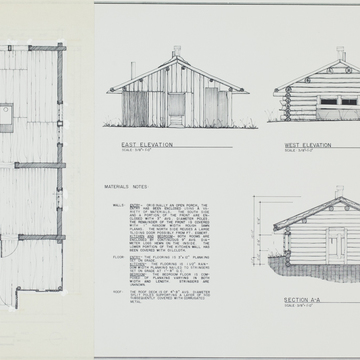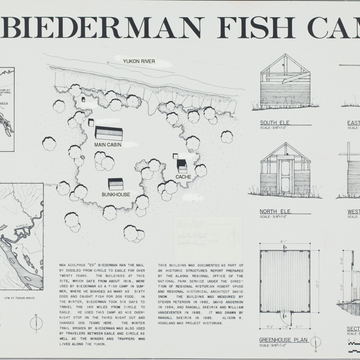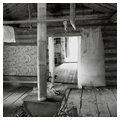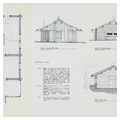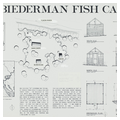Max Adolphus “Ed” Biederman had the mail contract between Eagle and Circle for about twenty years beginning in 1912 and made the 160-mile trip by dog sled in six days, with a layover at each end, thirteen times a winter. This camp, located halfway between Eagle and Circle, served as his stopover on the third night out, where he switched dog teams. On other nights he stayed at roadhouses or shelter cabins, places where he had stashed goods ahead of time. The winter trail that he maintained was used by other travelers as well and served to link the linear community of the scattered residents on the Yukon and its tributaries between Eagle and Circle.
Biederman kept about twenty-four dogs and in the summer maintained an active fish camp here to feed them all. Virtually useless in the summer, dogs belonging to miners and trappers in the region would also board at Biederman's, so he might have as many as sixty dogs at a time. Biederman had two fish wheels with 12-foot-wide baskets reaching 8 feet into the water and once caught nine hundred salmon in 12 hours. The fish would be cleaned, then smoked over a fire. Biederman would sell the fish, baled in 65-pound bundles for dog food, in Circle and Eagle.
The cabin and outbuildings at this fish camp are evidence of Biederman's way of life. The main cabin, built in 1916, is one story, of round logs saddle notched at the corners. The cabin is divided into two rooms by a log cross wall, but the exterior logs run the full length of 31 feet. The entry, originally an open porch, has since been enclosed with a variety of found materials. The roof is sod on split poles and covered with corrugated metal.
Other buildings at the site include a bunkhouse, built in 1918, a one-story, one-room log structure. There is a cache, raised 6 feet on posts, with wood-framed diagonal-plank walls; a greenhouse, 8 feet by 10 feet, with partial walls and the frame of a gable roof; a meat cellar; and various A-framed dog houses. Accompanied by his wife and five children, Biederman used this camp until his death in 1945. The complex is within the Yukon-Charley Rivers National Preserve, but privately owned.

